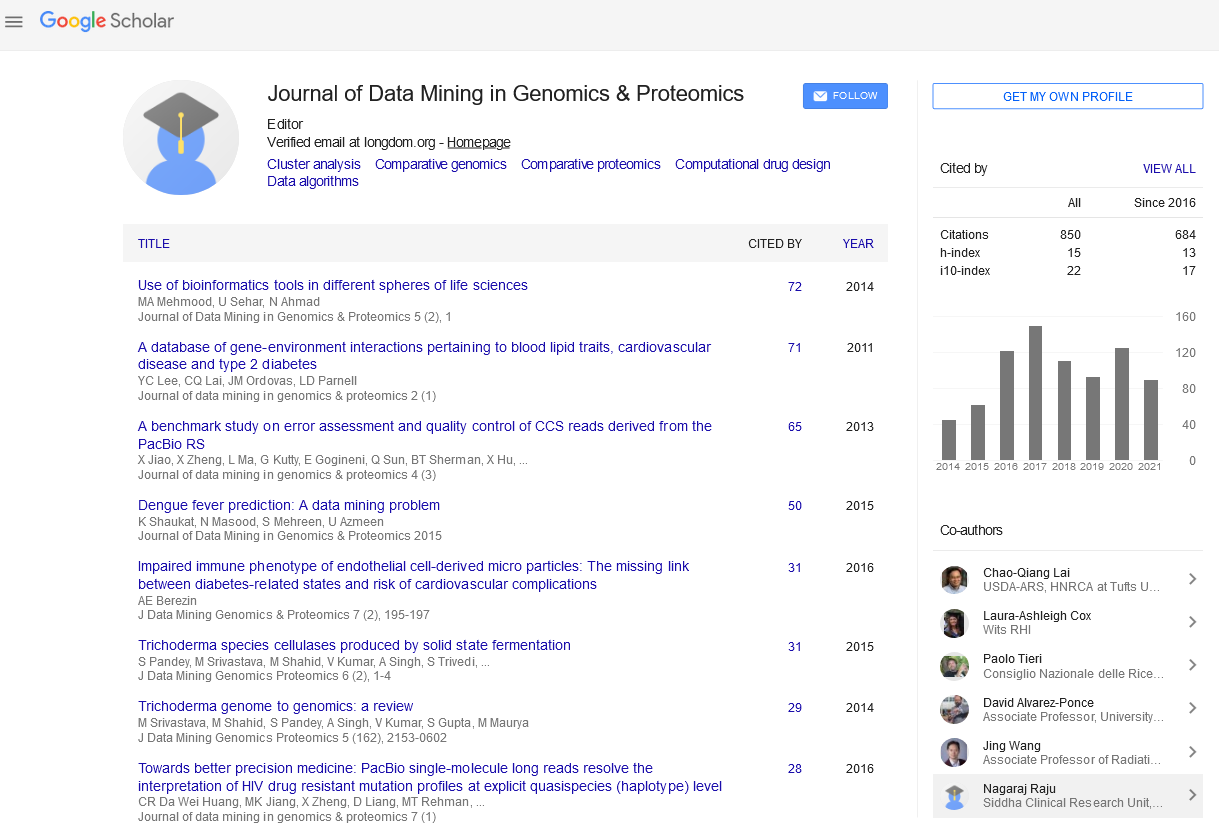PMC/PubMed Indexed Articles
Indexed In
- Academic Journals Database
- Open J Gate
- Genamics JournalSeek
- JournalTOCs
- ResearchBible
- Ulrich's Periodicals Directory
- Electronic Journals Library
- RefSeek
- Hamdard University
- EBSCO A-Z
- OCLC- WorldCat
- Scholarsteer
- SWB online catalog
- Virtual Library of Biology (vifabio)
- Publons
- MIAR
- Geneva Foundation for Medical Education and Research
- Euro Pub
- Google Scholar
Useful Links
Share This Page
Journal Flyer

Open Access Journals
- Agri and Aquaculture
- Biochemistry
- Bioinformatics & Systems Biology
- Business & Management
- Chemistry
- Clinical Sciences
- Engineering
- Food & Nutrition
- General Science
- Genetics & Molecular Biology
- Immunology & Microbiology
- Medical Sciences
- Neuroscience & Psychology
- Nursing & Health Care
- Pharmaceutical Sciences
Phenomics and the challenge of full life span, 3D, whole organism imaging at cell resolution
2nd International Conference on Big Data Analysis and Data Mining
November 30-December 01, 2015 San Antonio, USA
Keith C. Cheng
The Pennsylvania State University, USA
Posters-Accepted Abstracts: J Data Mining Genomics Proteomics
Abstract:
The first successes in reductionist-based genetics derived from focused phenotypic analysis. The ideal of systems-wide analysis, however, requires comprehensive, rather than focused phenotyping, the full range of which comprises phenomics. Success in the phenomics of multicellular, and particularly vertebrate, organisms requires an ability to meet multiple significant challenges to phenotyping. Phenotypes may affect any cell type at any life stage, necessitating the ability to recognize and characterize changes in any cell type. Some phenotypes can only be appreciated in the context of the whole organism in terms of shape and phenotypic gradations, requiring both 3D imaging at cell resolution and fields of view that encompass the whole organism. Image degradation is associated with light scatter and pigmented cells, preventing the use of light as the only method of obtaining whole-organism, pan-cellular imaging of samples in the mm length scale. Comprehensive phenotyping needs to be applied to complete sets of knock-out organisms, making high throughput necessary to be practical. Reproducible, quantitative measures of qualitative changes would be facilitated by computational analysis. Only if we can meet all of these challenges we will be equipped to dissect all the functions of a gene knockout or all the functions that might be affected by a potential toxicity. We illustrate the nature of each of these challenges and ongoing attempts to answer them.
Biography :
Keith C. Cheng received his M.D. from New York University School of Medicine and Ph.D. from University of Washington/Fred Hutchinson Cancer Research Institute. He is boarded in Anatomic Pathology (Brigham & Women’s Hospital, U Washington) and completed postdoctoral studies at Washington. He is known for discovery of a gene that played a key role in the evolution of human skin color and his work in phenomics and webbased resource development (www.zfatlas.psu.edu). He is Distinguished Professor of Pathology, of Biochemistry & Molecular Biology, and of Pharmacology, and Director of Experimental Pathology at the Pennsylvania State University College of Medicine.


